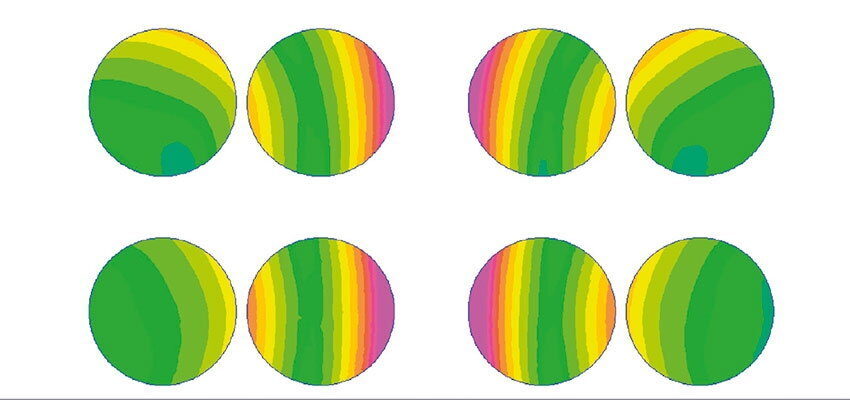
FEM modelling and experimental validation of proximity loss
Abstract Skin depth and proximity effects in transformer windings are important phenomena influencing the design even at power frequencies (50-60 Hz). They become critically important...
byStan ZUREK

Abstract
Skin depth and proximity effects in transformer windings are important phenomena influencing the design even at power frequencies (50-60 Hz). They become critically important at elevated frequencies, especially for high-frequency transformers. This article presents results of computer simulations and experimental validation on physical prototypes. The investigated frequency range was from 1 Hz to 10 kHz.
Keywords: copper loss, proximity loss, skin effect
1. Introduction
The topic of proximity loss and skin effect in transformer windings was discussed in the two-part paper published in the previous issues of Transformer Magazine [1, 2]. However, the previous papers focused solely on results obtained from computer simulations through 2D Finite-Element Method (FEM) modelling.
In this paper the same FEM modelling technique is used. However, the modelled structures were simplified so that they could also be built as physical prototypes. A specially designed and built measurement apparatus was used for the experimental measurements.
In this way a direct comparison between the simulated and the measured results could be achieved. These results, both absolute and relative are presented below.
2. FEM modelling
FEM modelling is used extensively in many branches of design and optimisation of electromagnetic devices, rotating machines and transformers [3]. The simulations can be conducted as two-dimensional (2D) or three-dimensional (3D).
2D FEM is carried out with the assumption that the modelled structure can be represented as a 2D geometry. This means that the modelling will be carried out for a single cross-section view, with the assumption that such cross-section is representative for the rest of the volume. There are two main approaches: 2D planar and 2D axisymmetric.
In the 2D planar approach, the structure is assumed indefinitely long and uniform. The representation takes form of a cross-sectional view (Fig. 1a). However, in the axisymmetric approach (Fig. 1b), the object is assumed to exhibit perfect rotational symmetry and only right-hand side of the cross-sectional view is modelled. Due to the mathematical calculations, the results are correctly taking into account the fact that the structure is three-dimensional, despite the fact that only 2D representation is used [4].

For 3D FEM the whole structure is represented (Fig. 1c). However, the 3D calculations are severely more computationally demanding. Both the computer memory and execution time are several orders of magnitude greater than for 2D representation. It might be even impossible to represent the full structure in 3D. For instance, despite great progress in computer technology, laminated cores still cannot be modelled in 3D and this remains a great challenge even for 2D FEM [5]. Therefore, it was decided to use 2D FEM in order to perform the calculations for this study.







